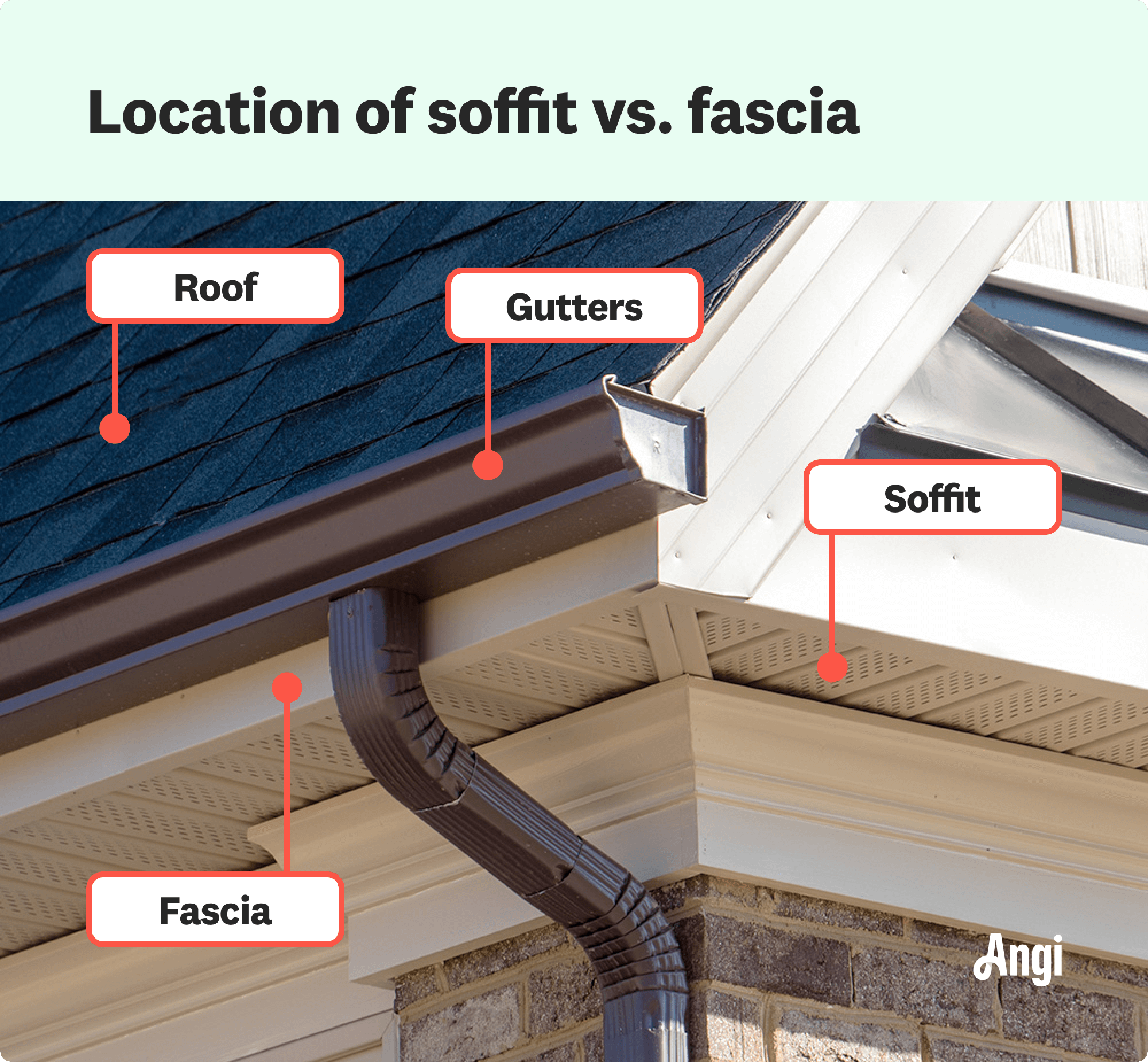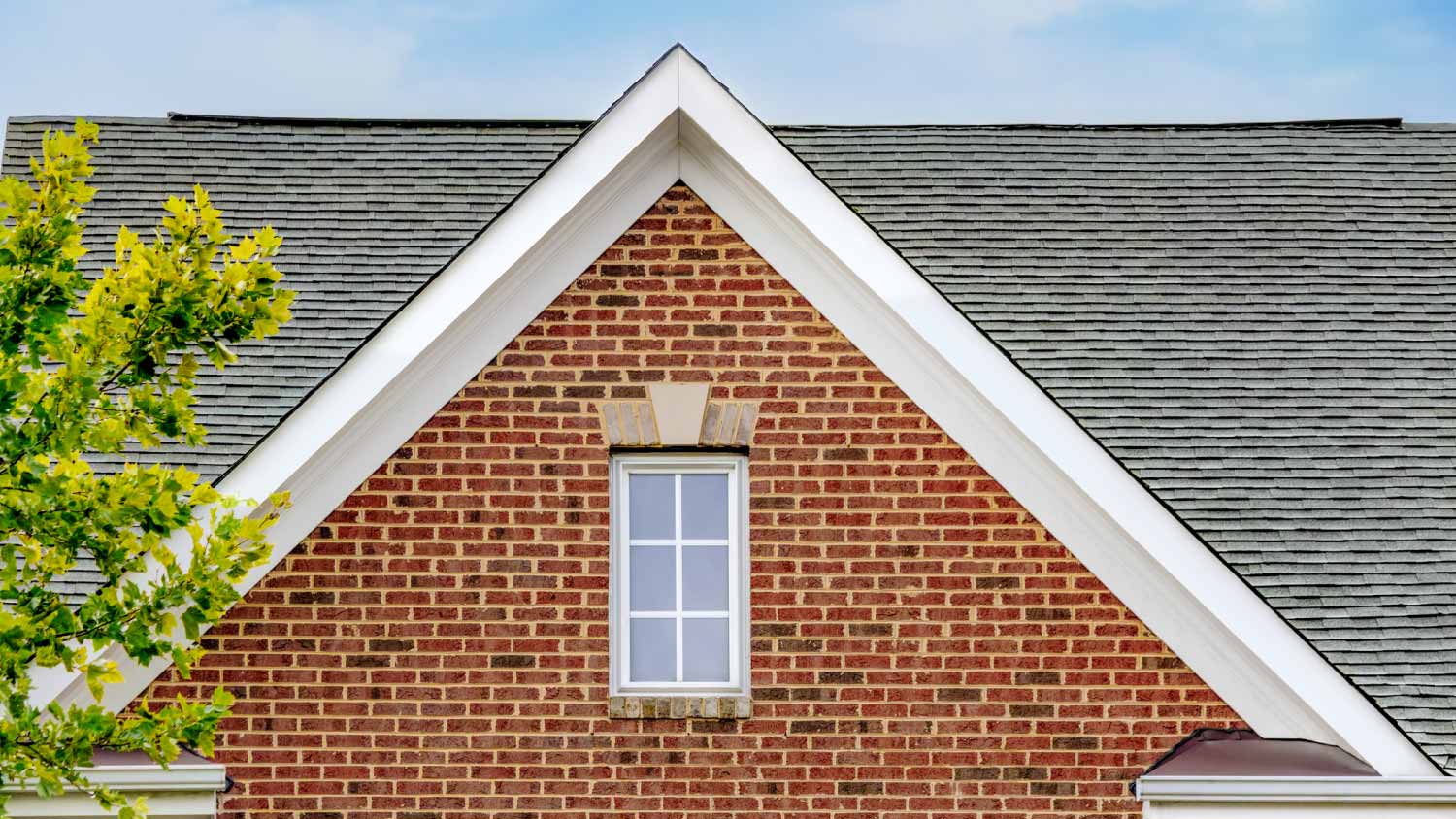
Dealing with roof damage and not sure how much to budget for a solution? Learn about roof repair costs in Los Angeles to get an accurate estimate.
Know the roles of these two key roof players


Soffit and fascia both protect your home from moisture.
Fascia is most often made of wood; soffit is often aluminum or steel.
Fascia runs parallel to the roof edge, and the soffit runs underneath it.
If you're building a home or repairing your roof, you may wonder: What's the difference between soffit and fascia?
These two roof parts work together to help protect your house from moisture, but they’re located in different areas and are sometimes made of different materials. Learning about soffit and fascia can help you know when to call a local roofing repair pro if you suspect any issues with these two roofing features.

Soffit and fascia work together to keep moisture away from a home, but they have some key differences.
Fascia are the horizontal boards that line the section beneath a roof overhang. They attach to the gutters and run parallel along the roof edge all the way around the perimeter of a house. They are also front-facing and can be easily seen from the street.
On the other hand, soffits are a venting mechanism that can be installed underneath a roof overhang—or eaves—to allow better airflow and keep moisture out of attics and roof decks. This is why they’re sometimes called eave soffit vents. Unlike fascia, they’re not easily visible, nor are they always necessary. There are a number of other roof ventilation options worth considering as well.
| Type of Difference | Soffit | Fascia |
|---|---|---|
| Location | Under eaves | Parallel to roof edge |
| Purpose | Improve airflow | Protect main structure from moisture |
| Cost | $1 to $3 per linear foot | $1.50 to $4.50 per linear foot |

While fascia and soffit serve similar purposes, there are some slight variations in the way they function.
For instance, fascia is considered a type of trim, whereas soffit is not. In addition to providing extra protection from moisture, fascia also supports the roof edge and keeps the gutters in place. This is also why it’s a mandatory feature while its counterpart is not.
By contrast, soffit doesn’t reinforce the roof structure in any way. Instead, its main purpose is to circulate fresh air underneath the roof to prevent water-logging and mold growth—two of the main culprits behind common roof damages. Soffit can also be a boon for other home features located in or near the roof, like attics or roof decks, as it’ll keep them dry and properly ventilated and make it more difficult for pests to get inside.
These two roof features differ in where they’re located, design, and material.
One of the biggest differences between fascia and soffit is where each is located. Fascia being a type of trim, runs parallel along the roof edge and is easy to see, whereas soffit is installed beneath the roof edge or eaves and is parallel with the ground. You can only see soffit if you’re standing directly beneath your roof and looking straight up.
Since soffit isn’t easily visible, you don’t have to worry about what it looks like as much as you do with fascia. By contrast, you can’t miss the front-facing feature that is fascia, which is why it must meld well with the rest of your home’s exterior. Factors like material, color, and style for fascia will play a more important role in the decision-making process than it will for soffit.
Although soffit and fascia can be made out of all the same materials, some are more commonly used than others. For example, standard and pressure-treated wood are among the most popular picks for fascia, but you can also find options made from polyvinyl chloride (PVC), aluminum, vinyl, and fiber cement.
On the flipside, aluminum and steel are the most commonly used material for soffit. However, soffit can also be made from wood, PVC, and fiber cement. Each option comes with pros and cons, so it’s a good idea to get to know the differences between soffit and fascia materials.
How much you pay for soffit and fascia will depend largely on which materials you use. Fascia costs range from $1 to $3 per linear foot of wood board and up to $5 to $8 per linear foot of vinyl boards. All in all, you can expect to pay between $150 and $3,800 for fascia projects ranging from 25 to 300 linear feet in scope.
The cost of wood soffit starts out slightly higher than fascia, at between $1 and $4.50 per linear foot. However, other choices are less expensive, like vinyl soffit, which costs $1 to $2 per linear foot.
Our roof replacement was completed ahead of schedule and the quality of the work is outstanding. The team kept everything neat and made the whole process stress-free
They were really respectful, they did the work fast, and cleaned everything and I did not even had to ask, I recommend them
Totally amazing experience with this company! We had a roof issue, they came out promptly, assessed it, and took pictures to show us where the damage was. Fixed the problem quickly and efficiently. Excellent job! We would definitely use again and highly recommend!
Excellent Roofing Service. Highly Recommend! Customer service is amazing. Throughout the project, Angel Chakour kept me informed with regular updates and was always available to answer any questions. His friendly and approachable attitude made the entire process much more enjoyable. It is...
Had these guys add 850 SQFT to my home. I could not recommend them enough. Process went faster than expected and they helped out dealing with permitting in Miami which was a plus. I highly recommend them and I did not have any issues
Hiring SJZ for our ADU project was the best decision. Sammy created a brilliant design that maximized the allowable space, and his crew brought it to life beautifully. The final unit is a stunning, functional living space that is been a game-changer for our property. Could not recommend SJZ...
I turned to John for garage door repair, and he exceeded all my expectations. He arrived the same day he was called, and the work was done quickly and professionally. The prices he offered were very reasonable, and I particularly appreciate the free estimate he provided. Communicating with...
Very good communication, and they are able to get the job done in a timely fashion. Definitely recommend them if you need any help with moving.
I had a massive three bedroom house to pack up and move across the state This moving company had my back though Their customer service was top notch They kept me in the loop throughout the whole process Plus they were bang on schedule All my belongings made it in one piece Kudos to these...
It has been a while since we wanted to write a review. We recently sold our house, and we believe that the remodel helped to increase its value. Aviv managed our project, and he was always available to answer our questions and address our concerns. The project was extensive, involving opening...
From average costs to expert advice, get all the answers you need to get your job done.

Dealing with roof damage and not sure how much to budget for a solution? Learn about roof repair costs in Los Angeles to get an accurate estimate.

Metal roofs offer an energy-efficient way to beat the California heat. Find out how much a metal roof costs in Los Angeles and what affects the total cost.

Need a new roof for your LA home? Learn about average roof replacement costs in Los Angeles and see what factors can influence your price.

Courteous homeowners may wonder what the etiquette is when it comes to tipping roofers. Find out if, when, and how you should tip roofers for a job well done.

With so many different types of roofs, it’s important to know the pros and cons of your roof’s style. Learn about 14 common roof types and how they measure up.

Discover how to install metal roofing over shingles to add long-lasting weather protection to your existing roof without removing the old material.